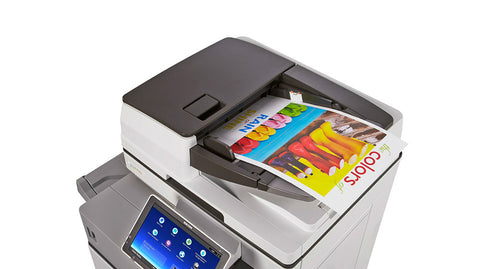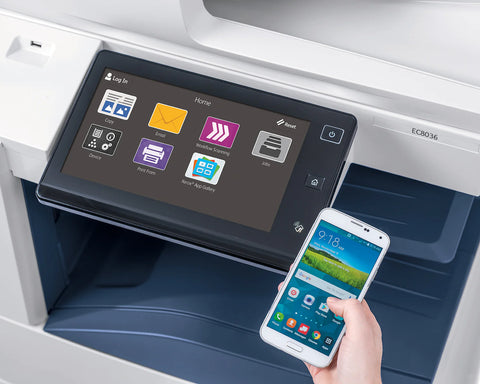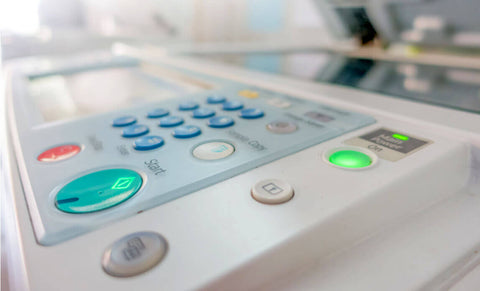If you are a small business owner, you know how important it is to have the right tools to run your business smoothly. One such essential tool is a printer. However, buying a printer outright can be expensive, especially for small businesses just starting out. This is where leasing a printer comes in. In this article, we will discuss everything you need to know about leasing a printer for your small business.
Why Lease a Printer for Your Small Business?
Leasing a printer has several advantages over buying one outright, especially for small businesses. Here are some reasons why you should consider leasing a printer:
Cost Savings
Leasing a printer can save you money in the long run. Instead of paying a large sum upfront to buy a printer, you can spread the cost over a period of time. This allows you to keep more cash in your business, which you can use for other expenses.
Access to the Latest Technology
When you lease a printer, you have access to the latest technology without having to pay a premium for it. This is because the leasing company replaces your printer with the latest model at the end of your lease term.
Flexible Payment Options
Leasing companies offer flexible payment options that can be customized to fit your business needs. This means that you can choose the lease term, monthly payments, and buyout option that works best for you.
Tax Benefits
Leasing a printer can provide tax benefits for your business. Lease payments are tax-deductible as a business expense, which can reduce your taxable income.

How to Lease a Printer for Your Small Business
Leasing a printer for your small business is a straightforward process. Here are the steps you need to follow:
Step 1: Determine Your Printing Needs
Before you lease a printer, you need to determine your printing needs. This includes the type of documents you need to print, the volume of printing, and the frequency of printing. This will help you choose the right printer and lease agreement that meets your business needs.
Step 2: Research Printer Leasing Companies
There are several printer leasing companies in the market. Research and compare different companies to find the one that offers the best lease terms, pricing, and customer service.
Step 3: Choose a Printer and Lease Agreement
Once you have found a leasing company, choose the printer and lease agreement that best suits your business needs. Make sure to read the lease agreement carefully and understand all the terms and conditions before signing it.
Step 4: Set Up and Maintenance
After you have signed the lease agreement, the leasing company will deliver and set up the printer for you. They will also provide maintenance and technical support throughout the lease term.

Things to Consider When Leasing a Printer for Your Small Business
Before you lease a printer for your small business, there are several things you need to consider. Here are some of them:
Lease Term
The lease term determines how long you will be leasing the printer. Choose a lease term that matches your business needs.
Monthly Payments
Make sure you can afford the monthly payments before signing the lease agreement.
Buyout Option
The buyout option allows you to purchase the printer at the end of the lease term. Make sure you understand the buyout option and its costs before signing the lease agreement.
Maintenance and Technical Support
Make sure the leasing company provides maintenance and technical support throughout the lease term.
Lease Agreement Terms and Conditions
Read the lease agreement carefully and understand all the terms and conditions before signing it.

Conclusion
Leasing a printer for your small business can be a cost-effective and practical solution. It allows you to access the latest technology without breaking the bank, while also providing you with flexible payment options and tax benefits.
When leasing a printer, it's essential to determine your business's printing needs, research leasing companies, and choose the right printer and lease agreement. Additionally, it's crucial to consider factors such as the lease term, monthly payments, buyout option, maintenance and technical support, and the lease agreement's terms and conditions.
Overall, leasing a printer for your small business can be a wise decision. It provides you with access to the latest technology while saving you money, offering flexible payment options, and providing tax benefits. If you're considering leasing a printer for your small business, be sure to do your research, choose the right leasing company, and understand the terms and conditions of the lease agreement before signing.
FAQs
Is leasing a printer a better option than buying one outright for a small business?
- Leasing a printer can be a better option for small businesses as it allows you to access the latest technology without paying a premium and provides flexible payment options. Additionally, leasing can be tax-deductible, providing you with further cost savings.
How long does a printer lease agreement usually last?
- Printer lease agreements typically last between 2-5 years, depending on the leasing company and the terms of the agreement.
What happens at the end of a printer lease agreement?
- At the end of the lease agreement, you can choose to return the printer or purchase it at the buyout price stated in the lease agreement.
Do leasing companies provide maintenance and technical support for the leased printer?
- Yes, most leasing companies provide maintenance and technical support for the leased printer throughout the lease term.
Can I upgrade my printer during the lease term?
- Some leasing companies allow you to upgrade your printer during the lease term. However, it's essential to check with the leasing company and understand the costs and terms of the upgrade option.


































![Absolute Toner $95/month 50" [FREE BONUS] AUTOMOTIVE PPF EDITION JAGUAR V-LX GCC J5-101LX-SE TINT PROTECTION FILM & TINT Cutter Window Tinting Plotter Vinyl Cutters](http://www.absolutetoner.com/cdn/shop/files/Photoroom-20250201_185430.png?v=1738485107)













